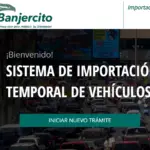How Hard is it to Learn Spanish
Some days, when I look back, I think it took years for me to learn Spanish. But that’s not exactly the case. I never took the Spanish language seriously and picking up a word or two every few months was something I considered part of my learning path.
How hard is it to learn Spanish? In reality most people who take years to learn a hobby topic usually do so with a passive manner. That’s how it was for my Spanish. If I were being honest, most of my learning could have been done within a matter of months of focused attention.
This is why an immersion program is good. It can accelerate your fluency and shorten the time for how long it takes to learn Spanish.
According to the Foreign Service Institute, Spanish is considered among the easiest languages to learn. It is labeled a Category 1 Language – meaning that an English speaker, on average, can attain Spanish proficiency within 24-30 weeks or 600-750 classroom hours.
Other languages that are in the same Category 1 include Italian, Swedish and Portuguese.
As the category ranking goes hire, so does the amount of time for an English speaker to achieve fluency in the language. For instance a Category 4 language is Arabic which will take 88 weeks or 2200 classroom hours to become proficient in the language.
Spanish Language Fluency the Easy Way

Learning Spanish or any other foreign language is less about it being hard to learn, and more about how seriously you take your learning journey.
If you want to learn Spanish, you have to incorporate habits into your learning methods. When starting with Spanish, start small. Set aside a time every day for 5 minutes to learn Spanish. Maybe, it’s just one word per day for a month.
It starts with learning discipline, especially if you’re learning Spanish on your own. Use the first month to develop a learning process that starts with consistency.
Then, the next month, I would add on additional resources. I would keep it simply to honing speaking skills over grammatical rules. That way you can start getting used to Spanish pronunciation since it may sound different as a native speaker of English.
I would also recommend taking Spanish classes with one of the native speakers you can find online. When you speak Spanish, you’re learning Spanish in the most practical way.
Over time, you can then begin supplementing with formal training on basic Spanish grammar, the Spanish alphabet, verb conjugation, sentence structure, and the like.
If I were to give myself a timeline to learn the Spanish language on my own, here’s what it would look like:
Month 1
Every day at 8am, learn a new Spanish word. This month is mostly about building a consistent habit.
Month 2
At the same time everyday, build your vocab, but with a native Speaker. That way you can learn the essential words that people actually use in the day to day. You should be taking on at least 30 minutes of practice during this schedule.
Month 3
At the same time everyday, you’ll continue building your vocabulary with one of the native speakers you can find online. But this time, practice one hour per day.
Month 4 and Onward
Learning Spanish should be routine at this point. Continue learning with a native Speaker to build a practical Spanish vocabulary. At this point you’ll start having questions on basic grammar or perhaps pronunciation of Spanish vowels.
The idea is, at this point you will have to start learning beyond vocabulary. Take formal notice of irregular verbs, verb conjugations, etc. This will make your life easier when you’re trying to change a certain verb or move the needle to Spanish becoming a native language.
Learning Spanish the Fastest Way
For many Spanish learners, classrooms are the default way to learn Spanish. But the nuances of the Spanish language cannot be completed within a Spanish classroom.
Learning a language is also about the culture of the Spanish speaking world. A particular language comes with particular nuances.
This is why I advocate moving to Latin America to learn this romance language.
The fastest way to learn Spanish is by complete immersion in a Spanish country. It triggers a survival instinct to communicate, else become ostracized.
Watching Spanish movies, reading Spanish media, eating the food of the country are ways to get a better understanding of how natives speak. This way you can learn more about slang and idiomatic expressions that don’t translate well into English or other languages.
The faster you move to a Spanish speaking country for language immersion, the faster your fluency will spike.

The caveat is that the immersive learning will be much harder than in a classroom setting. And sometimes it’s hard to find the time to take to studying Spanish abroad. But it is a shortcut to learning Spanish.
For those who cannot afford moving to a Latin American country, I advise you take online classes when possible. There are also local colleges that have online courses for reduced fees. If not, then try to find a native Speaker on language learning websites.
These are the fastest ways to learn Spanish for most learners.
Immersion with Spanish Speakers
Immersion with people where Spanish is a native tongue makes Spanish learning extremely easy. Largely because it’s fun.
Ideally you should be abroad for this, but you can always start learning Spanish today through online programs.
Either way, being in the USA, allows you to become immersed as well as the Spanish speakers are widespread. I had a friend who learned Spanish by finding roommates to stay with who only spoke Spanish.
There’s really no excuse to not being able to immerse yourself in the language around native Spanish speakers.
Learning Spanish you can use for Vacation

Not getting to go to the Spanish speaking world for language immersion, is not the end of the world. You can still use this opportunity to travel during your stay in Spain or wherever Spanish is spoken.
For these kinds of students, it’s just about learning enough vocabulary before departure so you can travel around the Spanish speaking world.
You want to learn proper pronunciation, first and foremost. But you also don’t want to be too lost without having at least some conversational Spanish beforehand.
The key is for this time to make conversation, or talk with native speakers as much as you possibly can. Doing this will drill your accent and vocabulary into your head.
It’s an investment for more practical learning down the road. But it’s also a great way to travel and get inspired by different cultures in the Spanish speaking world.
Related Questions
How long does it roughly take to learn Spanish?
It takes a long time to learn a new language. But you can become fluent in a year if you put your mind to it.
There are no shortcuts, but the fastest way is an immersive environment like Latin America or taking online courses like Rosetta Stone.
According to FSI, it takes native English speakers 24-30 weeks to learn Spanish at a proficient level.
Is Spanish easy to learn?
Spanish is considered a Category 1 language according to FSI. This is the easiest level to learn a new language, in the shortest amount of time. Spanish is considered one of the easiest language to learn for a native English speaker.
Why is Spanish so hard for me to learn?
You could be learning the wrong materials. If you’re using free resources, it’s possible that these are not well designed for beginners.
Perhaps they assume too much knowledge of Spanish. Or they just might teach bad habits like incorrect pronunciation and grammar rules.
It happens to me all the time when I learn new languages by myself without proper instruction.
It’s the same way you learned the English language as a child. You can’t learn how to speak without being exposed to it. So find some good materials and get them online if they are available for free.
What does learning Spanish consist of?
Spanish consists of speaking, listening comprehension, reading, writing and grammar rules that govern both of them.
What’s the best way to learn Spanish?
Everyone is different, but you’ll find a combination of textbooks, audio files and conversations work the best.
Combine exercises on grammar with listening comprehension tests for example. Don’t forget flashcards or mnemonics either, as they really help!



